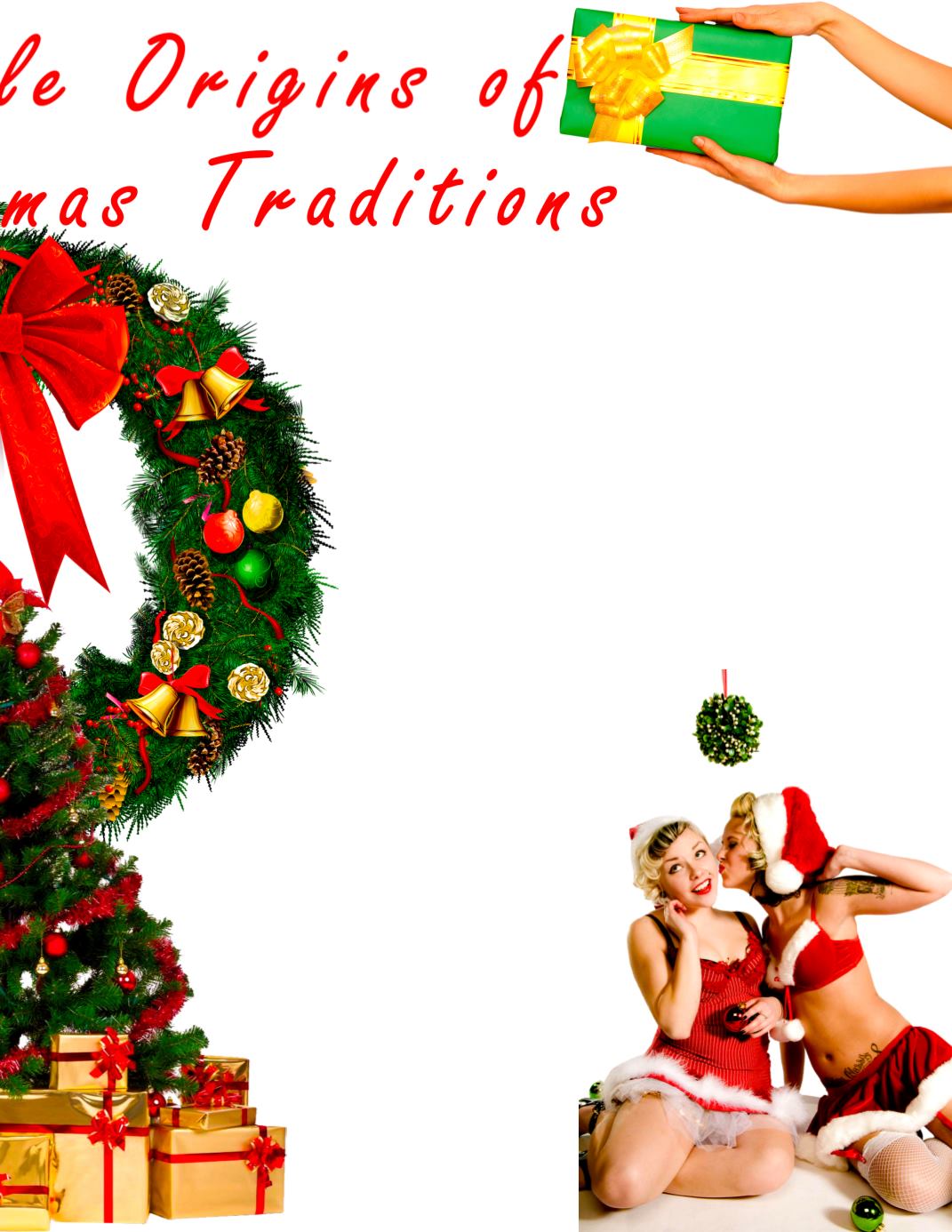

tion. Chrysanthemum, for
example, is sometime
shortened to
“xant” on flo-
rist’s signs,
and
crystal
has
some-
times been
abbreviated
as “xtal”.
Stockings
Many people know of Saint
Nicholas being the basis
of Santa Claus, but the
practice of stocking-
stuffing can be traced
back to his charitable
donations in the 4th
century. Nicho-
las believed that
childhood should
be savored and
enjoyed
– but in
a time
where boys and girls younger than 10
had to work to support their families, this
wasn’t always possible. He therefore gave
what he could in homemade food, clothes,
and furniture. The bishop even gave out
oranges, which would have been very rare
and expensive in Lycia, where he lived.
The problem became where to leave these
gifts so that the children would find them.
According to legends, he then saw girls’
stockings hanging above the fireplace,
and ol’ Saint Nick (to paraphrase) thought
“Why the hell not?” From then on,
children would hang stockings up hoping
that Saint Nicholas would visit them that
night. Beyond St. Nick, the practice can
be traced back to Scandinavian countries
that still held their Pagan beliefs. Children
would leave their shoes full of carrots,
straw, or other similar foods for Odin’s
mythic horse, Sleipnir. When Sleipnir ate
the food, Odin would leave candy or other
treats in their place.
Wreaths
Since classical antiquity, the wreath has
been used as a symbol of power and
strength. In Rome and Greece, kings
and emperors often wore laurel wreathes
as crowns – a practice they themselves
borrowed from the Etruscans, who pre-
dated them. The Greeks and the Romans
connected the laurel wreath to their sun
god, Apollo, and considered the crown to
embody his values. Harvest wreathes – the
predecessors to our modern decorations
– were used in rituals for good harvests,
and predate even written history. Ancient
European animists often used evergreen in
their wreathes to symbolize strength and
fortitude, as an evergreen will live through
even the harshest of winters. As for the
connection to Christianity, since wreathes
symbolized tenacity and everlasting life,
they were often used in funerals of
important people, specifically in
the burials of saints and martyrs.
Christmas Tree
The modern Christmas tree differs greatly
from its roots; today, we decorate an
everlasting, artificial construct with bright
lights and dazzling ornaments, while tradi-
tionally, the tree was of course, real and
more importantly, decorated with edibles
such as apples and nuts. The tradition,
as with that of the wreath, started with
the elements symbolized by evergreens
in pre-Christian winter festivals: immor-
tality and fortitude. The evergreen was
also known to have represented the same
values to a variety of cultures, including
the Egyptians, Chinese, and Hebrews. The
worship of trees was also very common
in European druidism and paganism. In
Christian tradition, trees were often put up
in December to serve the dual purpose of
warding off the devil and allowing a perch
for whatever birds still remained. Ever-
green trees decorated with apples and wa-
fers were also used in Christmas Eve
plays during
the Middle Ages to
represent
the tree from which
Adam
and Eve at the
forbid-
den fruit. As for
deco-
ration, the first
evidence
for decorated
Christmas
trees comes
from
German














